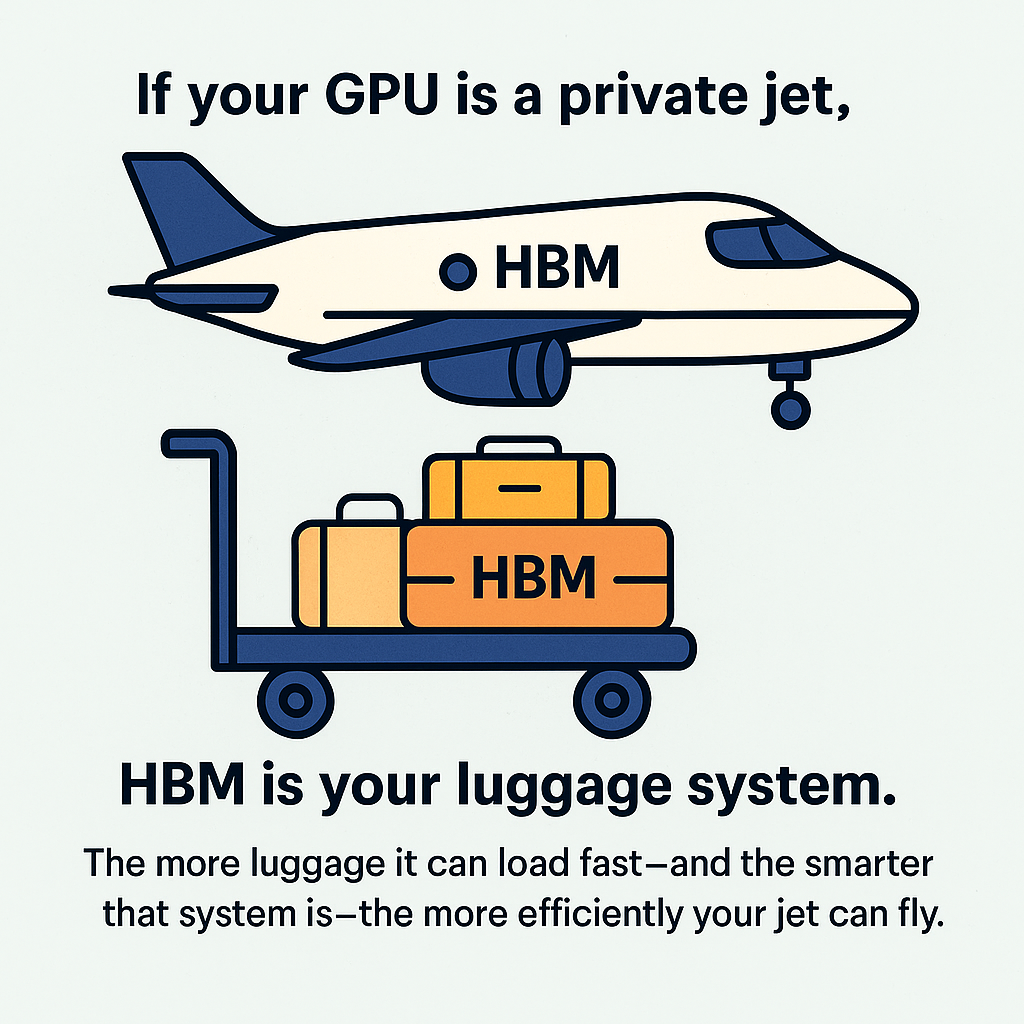Why Is AI Suddenly Obsessed with Memory?
You’ve probably already played with AI tools—not just ChatGPT, but camera apps like Snow that turn your face into an older version of yourself or flip your gender. Chances are, you’ve been entertained by AI-generated content on YouTube; music remixes, voice clones, or satisfying edits. AI is no longer just a fun extra in your life. We live with it now. There are countless tools and infinite ways to use AI to work for you or entertain you. What a wild time to be alive. I even use my paid ChatGPT as a kind of digital therapist sometimes. I tell it things I can’t share with friends or family. When I’m upset, I ask it to talk me through my feelings step-by-step. And you know what? It actually helps. But what really powers those tools in the background? Thinkgs like GPUs, HBM, and fast processors are working in the backstage for your faster, more accurate result.
How AI Thinks : How HBM helps Ai?
Ai isn’t a genius, it’s a fast remix machine
Of course, I don’t trust everything it says. Because while it knows a lot—it doesn’t know everything. And yes, sometimes it says things that are completely wrong.
Why? Because ChatGPT (and other AIs like it) don’t think like humans. They’re trained on massive amounts of text written by humans. That means AI doesn’t “know” things in the way people do—it predicts what comes next based on patterns it’s seen before. If you ask a vague or poorly worded question, AI might get confused—and when it’s confused, it can generate something that sounds right but is completely false. That’s called a hallucination in AI terms.So when people say “You can create anything with AI,” I say… not exactly. AI isn’t a genius inventor or novelist. It’s more like an insanely fast assistant that can gather information and remix it, but it still needs your brain to guide it.
What’s required for better Ai? GPU and now HBM?.
When AI first emerged, it didn’t make big headlines—at least not for everyday people. It had been around in labs and research papers for decades. (If you’re curious about how AI started, check out [my older blog post].)
But for the general public, AI really stepped into the spotlight around 2020–2021. That’s when cryptocurrencies boomed, the world shut down during the pandemic, and graphic card prices went through the roof.
Gamers needed better GPUs. Non-gamers (like me) became gamers. People needed better tools at home. Meanwhile, crypto miners were buying up every GPU they could find. And then the AI industry began exploding, and they wanted GPUs too.
The result? Graphics cards that used to cost $400 were suddenly selling for $1,200 or more.
Why GPUs?
Because they’re not just for rendering pretty pictures. GPUs are great at parallel processing—doing thousands of tiny tasks at once. That makes them perfect for training AI models, which require massive amounts of data and calculations to be processed simultaneously.
So researchers, developers, and companies all jumped on board.
GPUs is Stabled. it’s HBM’s turn.
But by 2024, things started to shift. GPU supply stabilized. Prices dropped. And companies like NVIDIA became the most valuable tech firms in the world. At the same time, something else became very clear:
Even the fastest GPU means nothing… if data can’t get to it quickly enough.
Think about it. ChatGPT doesn’t just answer you from memory—it pulls from gigabytes of learned information in a matter of milliseconds. Image generators compare thousands of example images in the blink of an eye to show you one perfect result. That’s a massive amount of data flying back and forth every second.
So the new bottleneck wasn’t the processor—it was the speed of memory.
That’s when HBM entered the chat.
HBM stands for High Bandwidth Memory.
Unlike old-school memory, HBM is stacked vertically like an apartment tower, with each floor packed full of data highways. This vertical structure means data travels shorter distances, faster, and in parallel.
To make it even smarter, some next-gen HBM technologies (like HBM-PIM) can even process simple tasks right in the memory—before it even hits the GPU. This makes it more like a smart assistant than a passive storage box.
Let me put it this way:
If your GPU is a private jet, HBM is your luggage system. The more luggage it can load fast—and the smarter that system is—the more efficiently your jet can fly.

Or another way: AI is the body. The GPU is the brain. And memory like HBM? It’s the heart and blood vessels, pumping data through the system. We’ve entered a time when AI doesn’t just generate text. It’s making real-time images, music, voices, and videos. That’s an insane amount of data to manage. So now, it’s not just about how strong the brain is. It’s about how fast the blood can flow.
Still don’t get what is HBM and why is faster than GPU? click here to educate yourself for comparison between GPU VS HBM
In the next post, we’ll dive deeper into how HBM works—why it’s built like a high-rise apartment, how fast it really is, and why it might be the most important tech no one talks about (yet).
Glossary:
- AI hallucination: When AI makes up an answer that sounds correct but is actually false.
- GPU (Graphics Processing Unit): Originally for rendering images, now used for AI due to its ability to handle many calculations at once.
- Parallel Processing: Running many small tasks at the same time, instead of one after another.
- HBM (High Bandwidth Memory): A type of ultra-fast memory stacked vertically to transfer data quickly.
- HBM-PIM (Processing in Memory): A smart memory design that allows simple data tasks to be processed inside the memory chip itself.
- Bottleneck: A slow part of a system that limits the overall speed or performance.
